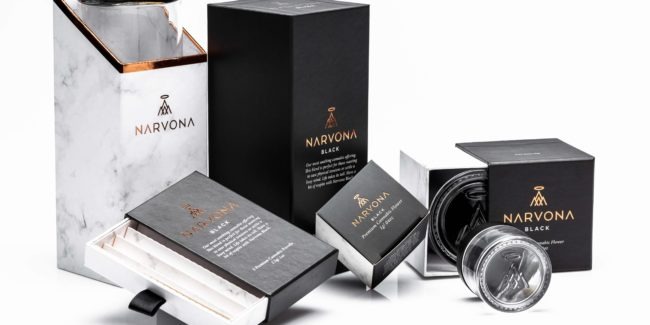They say the future is female, but what does that mean for the cannabis business owner? Since the creation of advertising and branding, most marketing efforts have been directed towards grabbing the attention of men; even though women play a significant role in household purchasing decisions. As the world of business, and cannabis, bend towards greater gender equity some entrepreneurs are wondering if they should start specifically building female-focused cannabis brands; and others are wondering how to do it.

According to a recent study published by Marijuana Business Daily, 27% of executives in the cannabis space are women. But even with such a high number of female leaders, most cannabis companies are missing the mark on female forward marketing.
Female-Focused Cannabis Marketing
Women Drive A Majority of Purchases
Whether you realize it or not, women are the primary drivers of household purchasing decisions. According to the Harvard Business Review, women decide on the purchases of 94% of home furnishings, 51% of consumer electronics, 60% of automobiles, 91% of homes, and 92% of vacations. Worldwide, women make roughly $13 trillion in earnings and control around $20 trillion in consumer spending; making women a broader consumer market than both China and India combined. Although there are no comparable statistics, it is not a stretch to think that these trends carry on over into the cannabis industry. To put it bluntly: it simply makes business sense to market your cannabis business towards women.
Women Are A Growing Market
At present, men still make up a majority of cannabis users, but the gap is steadily closing. According to a white paper released by the Green Market Report, roughly 74% of American cannabis consumers are men and 26% are women. However, of those that are likely to try cannabis, approximately 48% are women. The same white paper also found that about 39% of new cannabis users are women. What this means is that women are increasingly becoming interested in using cannabis. As markets mature, and as the social stigma behind cannabis use declines, women will continue to take up a more significant percentage of the market share. Bearing this in mind, you have to ask yourself whether you want to continue to solely market to a shrinking consumer base (i.e., men) or whether you should branch out into a growing one (i.e., women)?

A Growing Number of Women Are Getting Into The Cannabis Industry
Even if you own a B2B cannabis business, it still pays to keep women in mind. A 2017 survey conducted by Marijuana Business Daily found that women hold roughly 27% of executive roles in the cannabis industry. If you only count ancillary cannabis businesses, that number jumps to approximately 42%. Likewise, another 35% of executive-level positions in cannabis dispensaries are held by women. With more women getting into the cannabis industry, you don’t want to pigeonhole yourself as a company that only cares about its male consumers.
Few Companies Are Marketing to Women
Aside from the fact that it’s the right thing to do, one of the best reasons why your brand should market towards women is that there are not a whole lot of companies that are right now. Of course, there are some companies out there that are selling to women, such as TSO Sonoma and Whoopi & Maya. However, on the whole, the majority of cannabis companies are either trying to go gender neutral or are leaning hard into the male demographic. This is also true outside of the cannabis industry. Research from MBLM found that 10 out of the 15 sectors surveyed are more successful in creating intimacy with male consumers than women. In business, success is not found by doing what everyone else is doing. Success comes from doing what no one else is and by doing it well.
More Women Use Cannabis Than You Think
We’ve already discussed the statistics behind women as cannabis consumers, but there is more to it than you might think. In addition to the number of women who report to using cannabis, there are even more women out there using cannabis that are not recorded. According to a survey by Van der Pop, a Seattle-based publication that focuses on female cannabis consumers, approximately 70% of women who use cannabis believe that there is a stigma associated with its use. Another 66% of female cannabis consumers reportedly hide their usage, with fear of judgment being the primary reason. Additionally, most cannabis consumer data only includes the person making the purchase. If a woman uses cannabis, but a friend or partner purchases it for them, there is no way to track it. There is a significant opportunity for cannabis companies that can successfully market to these two hidden demographics.
Building a Female-Focused Cannabis Brand
Even if your company has already decided to market to female cannabis consumers, it might not be as easy as you might think. Decades worth of sexist advertising has primed our brains to make tragic missteps when marketing to the female consumer. Here are a few tips to make sure that you don’t make the same mistakes.
Don’t Market to Women
As paradoxical as it might sound, don’t market your company or product to women. What I mean by that is don’t market to women as a general audience, and instead market to specific women. Marketing to “Women” as a general audience is not only sexist but also bad business. Women make up half of the general population, and they are just as diverse as men. Different women hold different values and have different needs. When devising your branding/marketing strategy, zero in on what kind of woman would want your goods or services. Is she a rustic lover of the outdoors? Or maybe she’s health-conscious consumer? Maybe she’s both. Regardless, you need to have a specific idea of the type of woman you want as a consumer and market to her and not some vague cardboard cut-out idea of what you think a woman is.

No Pink
This should go without saying, but sadly it bears repeating. When marketing to women, don’t just slap pink on something and call it a day. In fact, just avoid any of the stereotypical marketing ploys that companies use to “appeal” to women. Not only is it sexist, but it’s also just plain stupid and lazy. A classic example of lazily marketing to women can be found in the computer company Dell. In 2009, the company launched the Inspiron Mini 10 netbooks. In conjunction with the launch, the company put a website called “Della” in the hopes of appealing to female consumers. The site featured so-called tech tips which included recommended calorie counting or how to find recipes online. Naturally, the campaign backfired.
Do Your Research
Regardless of whether you are a man or woman, you need to do your research. Research can help you test your messaging and unlock critical insights that you would have never thought of. The best way you can avoid making mistakes like the one made by Dell is by conducting some consumer research. No matter how open-minded or progressive you might think you are, our language is filled with offensive euphemisms and stereotypes; and study is the best way to rid yourself of them. Furthermore, it pays to know that your messaging is resonating with the correct audience. You may think that your branding campaign is perfect for the kind of woman that likes to go rock climbing when in reality it resonates with tech geeks.
Include Women in Your Marketing/Branding Efforts
Again, this should go without saying, but you would be surprised. It is essential to include women in your marketing/branding efforts; and not just for reasons of equality. As a man, you will naturally have some blind-spots when it comes to gender, and including women will help you avoid these issues. As a woman, it is important to include other women in your branding/marketing efforts because a diversity of opinions will help you avoid mistaking your own views as being representative of your entire gender. In general, it is good business to keep a team of people with a diverse arrangement of thoughts, ideas, and identities.
When in Doubt, Ask a Woman
Ignoring the overriding moral imperative, branding your business to appeal to women just makes good old-fashioned sense. Women make the vast majority of household purchasing decisions, generate and command an enormous amount of wealth, and are one of the fastest growing consumer demographics.
Appealing to women may be a no-brainer, but doing it successfully is another question. Once again, common sense will win the day; do your homework, don’t treat women as a monolithic demographic, and actually include women in the branding process. In other words, your average everyday branding process.



